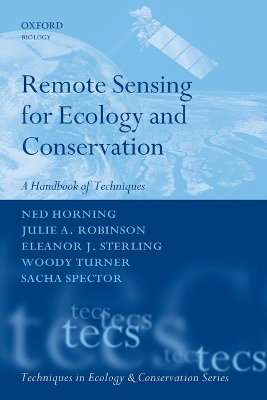Techniques in Ecology & Conservation
1 total work
Remote Sensing for Ecology and Conservation
by Ned Horning, Julie a Robinson, Eleanor J Sterling, Woody Turner, and Sacha Spector
Published 1 July 2010
The work of conservation biology has grown from local studies of single species into a discipline concerned with mapping and managing biodiversity on a global scale. Remote sensing, using satellite and aerial imaging to measure and map the environment, increasingly provides a vital tool for effective collection of the information needed to research and set policy for conservation priorities. The perceived complexities of remotely sensed data and analyses have tended
to discourage scientists and managers from using this valuable resource. This text focuses on making remote sensing tools accessible to a larger audience of non-specialists, highlighting strengths and limitations while emphasizing the ways that remotely sensed data can be captured and used,
especially for evaluating human impacts on ecological systems.
to discourage scientists and managers from using this valuable resource. This text focuses on making remote sensing tools accessible to a larger audience of non-specialists, highlighting strengths and limitations while emphasizing the ways that remotely sensed data can be captured and used,
especially for evaluating human impacts on ecological systems.
